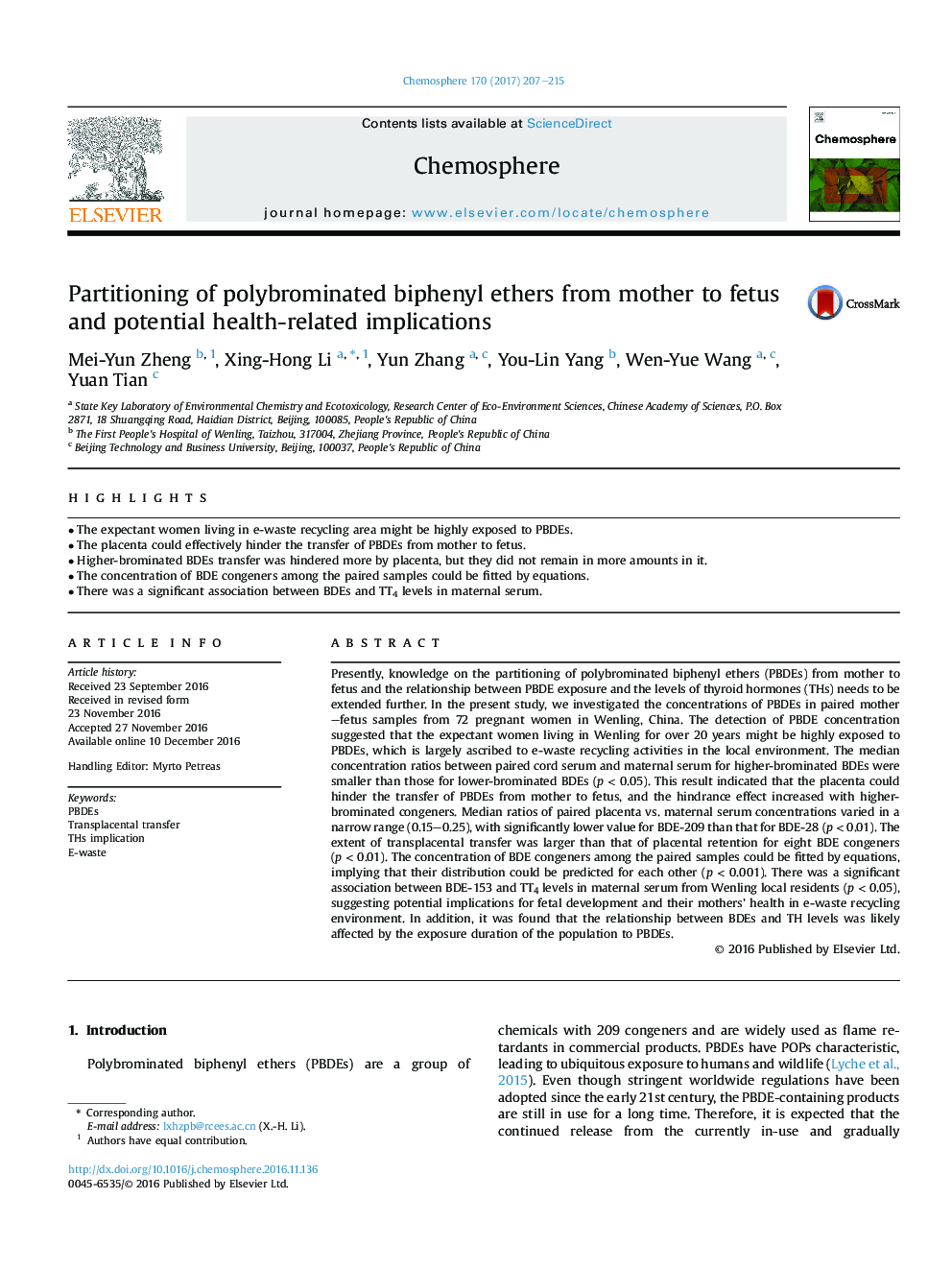| Article ID | Journal | Published Year | Pages | File Type |
|---|---|---|---|---|
| 5746799 | Chemosphere | 2017 | 9 Pages |
â¢The expectant women living in e-waste recycling area might be highly exposed to PBDEs.â¢The placenta could effectively hinder the transfer of PBDEs from mother to fetus.â¢Higher-brominated BDEs transfer was hindered more by placenta, but they did not remain in more amounts in it.â¢The concentration of BDE congeners among the paired samples could be fitted by equations.â¢There was a significant association between BDEs and TT4 levels in maternal serum.
Presently, knowledge on the partitioning of polybrominated biphenyl ethers (PBDEs) from mother to fetus and the relationship between PBDE exposure and the levels of thyroid hormones (THs) needs to be extended further. In the present study, we investigated the concentrations of PBDEs in paired mother-fetus samples from 72 pregnant women in Wenling, China. The detection of PBDE concentration suggested that the expectant women living in Wenling for over 20 years might be highly exposed to PBDEs, which is largely ascribed to e-waste recycling activities in the local environment. The median concentration ratios between paired cord serum and maternal serum for higher-brominated BDEs were smaller than those for lower-brominated BDEs (p < 0.05). This result indicated that the placenta could hinder the transfer of PBDEs from mother to fetus, and the hindrance effect increased with higher-brominated congeners. Median ratios of paired placenta vs. maternal serum concentrations varied in a narrow range (0.15-0.25), with significantly lower value for BDE-209 than that for BDE-28 (p < 0.01). The extent of transplacental transfer was larger than that of placental retention for eight BDE congeners (p < 0.01). The concentration of BDE congeners among the paired samples could be fitted by equations, implying that their distribution could be predicted for each other (p < 0.001). There was a significant association between BDE-153 and TT4 levels in maternal serum from Wenling local residents (p < 0.05), suggesting potential implications for fetal development and their mothers' health in e-waste recycling environment. In addition, it was found that the relationship between BDEs and TH levels was likely affected by the exposure duration of the population to PBDEs.
